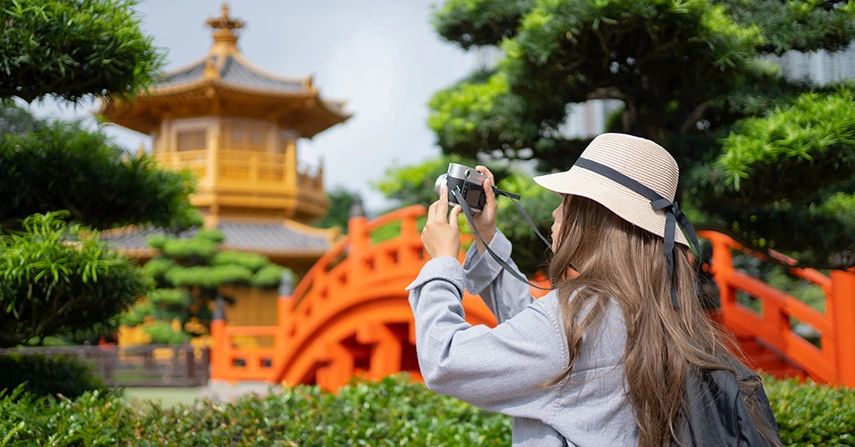Hong Kong had seen over 10 million visitors in the first 5 months of the year, indicating a faster-than-expected inbound tourism recovery, This was bolstered by relaxed Covid regulations and attractive offers from the tourism ministry such as discounted air and train tickets, coupons for spending on dining out and more. While most tourists were from mainland China and nearby South-East Asian countries.
On March 30th, Hong Kong Tourism’s Board’s executive director Dane Cheng said that they expect the major rebound to happen in the second half of 2023 and were optimistic about achieving their arrival target of 25.8 million by the year-end.
Azira studied visitation trends and movement patterns at the start of 2023 to understand consumer behaviour in Hong Kong. With a significant recovery in inbound visitor arrivals and relaxation of restrictions, Azira studied the data again to understand how consumer behaviour has changed as the country prepares for increased visitors and businesses hope for better performance in the last two quarters.
We looked to answer key questions that can help businesses better prepare and strategize for the next two quarters. The timeline for the study was from April 17th to May 14th, 2023. This period was chosen to include popular public holidays such as Labour Day, the Golden Week holidays, and more. We studied the behaviour and profiles of visitors at cafes, tourist attractions, hotels, bars, and shopping malls.
Key Questions
1. Where are visitors coming from and what is the audience profile?
Most visitors were primarily from mainland China and neighbouring South-East Asian countries, followed by the USA and Australia.
The top 5 countries by visitor percentage were:
Other top countries of origin include Malaysia, the Philippines, Thailand, and Britain.
Audience profile and demographics: Over 50% of the visitors were from the 25-44 age group, followed by 20% from the 45-54 age group, followed closely by the 35-44 and 18-24 age groups.
Age Groups
No Data Found
2. What was the purpose of travel?
Hong Kong, being an important economic hub, attracts both leisure as well as business travellers. The data reveals that most travellers were from the affluent category and this can be attributed to the higher fares for both air travel and hotels in Hong Kong during this period, with prices surging due to increased demand. Businesses can expect lower income categories to also visit once prices have normalised.
Solo travellers and parents also made up a significant portion of the travellers, potentially returning to visit family or vacation following the relaxation of restrictions.
Audience Profie
No Data Found
3. Where did visitors go?
Bars, cafes, and tourist attractions were the most visited spots. Bars were especially popular among Chinese tourists, whereas tourists from Japan and Taiwan seemed to prefer cafes. Tourists from the USA and Australia displayed interest in all categories with bars, hotels, and tourist attractions leading.
Bars located in the popular Lan Kwai Fong district were especially popular.
4. What was the brand affinity by category?
Bars: The historic district of Lan Kwai Fong, lined with bars and restaurants has attracted the most visitors. A few especially popular brands were Geronimo Shot Bar, Soho Hong Kong Island, and Lan Kwai Fung.
Cafes: Popular global franchisee brands such as Starbucks and Pacific Coffee Company attracted the lion’s share of visitors. Smaller, trendy boutique brands like The Coffee Academic and Blue Bottle Coffee were also popular among visitors.
Hotels: With high demand and low availability hotel room prices surged during the peak holiday season. With most travellers being from the affluent category, 5-star hotels like Grand Hyatt, Sheraton, and Shangri-la saw a rise in visitors. However, the Dorsett hotel chain which has the most branches in Hong Kong attracted the most visitors.
Shopping Malls: Shopping malls that have luxury brand outlets saw the most visitors like IFC Mall, Landmark, and Harbour City Mall. These three malls accounted for over 50% of the visitor footfall among the malls analysed.
Tourist Attractions: The Sky 100 Observation deck and the Peak Tram were must-visit attractions for visitors, followed by Madame Tussauds and Disneyland
How Brands Can Use This Data
1. Audience Segmentation & Targeting: With accurate insights into audience profiles, demographics, brand affinity, and interests, brands can optimise their audience segmentation and target for better-performing campaigns, quality leads, and increased ROI and sales. With Azira, you can target highly specific audiences based on where they go or where they are from.
2. Tailored Messaging and Offers: With the ability to understand where your consumers are visiting or staying at, you can tailor your marketing messaging and offer attractive discounts and offers. For example, luxury brand retailers can target visitors staying at luxury hotels or visiting high-end restaurants.
3. Understand Traveller Behaviour: Tourism boards and agencies can benefit from Azira’s real-time data insights to understand movement patterns and trends as they develop. These insights can then be used to inform campaigns and attract more visitors with better results.
Learn how you can use data to power your tourism campaigns, attract more visitors and ensure more customer satisfaction.




